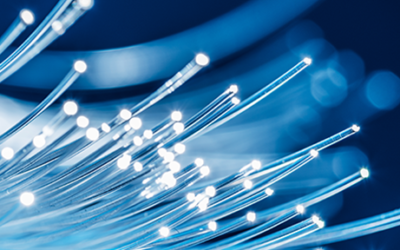Global Trends and Infrastructure choices

Tags: copper | fiber optic | Networks | trends | Wireless
In these turbulent times and economic climate, the realities and priorities of today’s business world have changed dramatically. Among the most astute business leaders in enterprises, the emphasis has shifted to ensuring the health of employees and network infrastructures…the accessibility of employees in a crisis…and the ability to ensure fast recovery from a disaster.
As we try to ensure the right wired and wireless networking technologies are implemented in our networks, having a picture of trends in all areas of communications is important. This article looks at views on the world of communications, and trends we should all be aware of when looking to the future.
Ubiquitous Communications –Global Trend 1
The global trend to ubiquitous communications, offering access to anyone, anywhere, at anytime, is evident in the many activities. Demand for ubiquitous communications services is world-wide and is being driven by the need to connect users to services. Among service offerings that are driving the systems required to provide ubiquitous communications are:
- Telephone and Video;
- Office communication services;
- Remote data communication services;
- Secure communication services;
- Personal security services;
- Mobile information services like position location, vehicle identification, weather and route; and
- Multimedia services.
- Wireless communication services
Global Communications/Networking – Global Trend 2
The Global Communications/Networking trend reflects the increasing demand, dependency and requirement for access to information wherever and whatever it is. The global cloud network provides a powerful and versatile environment for business, education, culture, and entertainment. Sight, sound, and even touch is being integrated through powerful computers, displays, and networks. People use this environment to work, study, bank, shop, entertain, and visit with each other. Whether at the office, at home, or traveling, the environment and its interface will be largely the same. Security, reliability, and privacy will be built in.
Key network technology areas include:
- High performance networking (e.g., gigabit networks, optical fiber networks, high-performance wireless networks);
- Network management of heterogeneous and large networks;
- Technologies to enable information to be disseminated to individuals, multicast to select groups, or broadcast to an entire network;
- Multimedia/video networking;
- Mobile computing/networking;
- Analysis, modeling and simulation of networks;
- Distributed or collaborative systems;
- High confidence systems to protect against malicious use or unintentional corruption of networking/information systems.
Machine-Machine Communications/IoT – Global Trend 3
The majority of communication traffic is now used for the transmission of data, as opposed to voice. In many applications, the data communication is between two or more machines that must co-ordinate their tasks with others in an increasingly complex and integrated world. In other cases, a device may monitor and control one or more remote devices because local control is either uneconomical or unsafe. Examples of services that fall within this trend include:
- Industrial process control;
- Automatic control and tracking of vehicles, examples include Intelligent Transportation Systems (ITS) and air traffic control;
- Remote health care (e.g., medical telemetry);
- Military command, control, and communications;
- Automated control of home environments; and
- Remote monitoring and control.
Economic, environmental and safety issues surrounding machine-machine communications will generate tremendous social pressure for a coordinated response to automation. Over the next few decades this trend will have a profound effect on the way we live as well as on the communications industry.
Broadcast, Information and Entertainment Services – Global Trend 4
The number and variety of entertainment, information and broadcast services offered continues to increase. In more recent years, the Internet also has become an important source of information and entertainment, as witnessed by the emergence of companies like Netflix. Consumers also demand entertainment and information suited to individual tastes and needs.
Conversion from analogue to digital technology signaled the beginning of a new era in broadcast services, with digital technology being used both in the creation, and delivery of programs. For broadcasters, it opened up a realm of new possibilities for related non-traditional services. It hastened the convergence of broadcasting and computers, with the delivery of digital information and services to the home.
As the technical quality of video and television improves, demand increases for greater real life simulation. Virtual reality entertainment will become more popular for consumers as powerful processors will provide a very high level of interactivity, improved image quality and realism at affordable cost.
Networking Trends
Developments in networking technology will continue to be driven primarily by:
- Demand for substantial increases in network capacity, and improved speed of information delivery;
- Requirement for seamless end-to-end network interoperability;
- Requirement for information security;
- Convergence of network-based data communications, telephony, telecommunications and broadcasting services and the rapid convergence of computing, communications and information technology; and
- The goal of achieving an interactive “infosphere” accessible to all.
Broadband applications require local-area network speeds of 1 Gb/s or higher. Wide-area interconnection of these LANs require network backbones with multi-gigabit and higher speed capability. Terabit speed networks are not too far away.
Network Architecture, Modeling, Management
The global interconnection of millions of heterogeneous networks will make networks vastly more complex in the future. They will use several propagation media, carry varied and integrated mixed-media applications and provide different services at multiple data rates. Increased network intelligence will be required to implement and manage such networks and to compensate for human limitations to fully comprehend the behavior of such large systems. Use of open architectures will continue to be essential, and development of, and compliance with international standards, will be of paramount importance.
Interoperability, Mobility, Routing
Individual network technologies are aggregated into a “network of networks” or an information highway composed of widely dissimilar networks ranging from kilobit HF networks to terabit optical networks. Each constituent network is characterized by the Quality of Service (QoS) it can provide. Each application/service imposes a QoS requirement on the underlying network. The challenge of emerging and future networks is to provide integrated, interoperable and secure communications transparently to mobile users.
The Transmission Channel
The Channel encompasses everything required to interface encoded source information with the transmission medium, delivering this information to its intended destination. The Channel includes the following technology areas.
- RF wireless and satellite systems;
- Fiber optic systems;
- Copper cabling media.
Wireless and Satellite Systems
The trend to personal communications and provision of broadcast services to mobile users is driving significant developments in cellular, microcellular, in-building and terrestrial mobile systems. Microcellular applications offer substantial gains in bandwidth and capacity, and can provide services such as vehicle location within cells. Wireless cable systems can deliver wideband channels to businesses and homes.
To exploit the above trends, additional spectrum, substantially improved capabilities to transmission channels, along with new techniques to identify and adaptively respond to channel impairments, are required. Technology improvements are required in antennas, terminal access and connectivity, digital signal processing and portable power sources. 5G and new generations of Wi-Fi (6 and 6E) are good examples of the result.
Fiber Optic Systems
Optical fiber networks are presently providing commercial long distance carriers with a high bandwidth, large capacity backbone. The operators strive to capture market share for enterprise traffic by deploying new technologies such as Wavelength Division Multiplexing (WDM), which lower the unit cost and price structure, resulting in higher traffic and network utilization. Carriers project an increase in traffic with a decrease in the cost.
The future will see an expansion of the capabilities of fiber and optical networks. Wavelength division multiplexing will be exploited in conjunction with other technologies such as new modulation schemes.
For the short haul, in buildings and local campuses, high bandwidth fibers are available to take advantage of the most cost effective VCSEL technology, optimizing the cost per bit of the local area network.
Copper Cabling Media
The deployment of fiber optics is forcing other ‘wired’ media to support higher data rates. Efforts to preserve existing investments in copper cabling and residential coaxial cabling are driving the trend to offer new services over wired media such as CATV and telephony cables. The evolution of wired media is intimately tied to the revolution currently happening in the subscriber local loop (access network). A second factor is the emergence of multi-Gigabit Ethernet standards.
There has been a large increase in data rates possible over wired media such as twisted pair, copper wires, etc. Data rates of 10 Gbps over copper cabling are possible. The future of copper cabling media is high performance systems, confined primarily to short distance intra-building communication and to the tail-end of the subscriber local loop.
Want to learn more about optical fiber, wired and wireless infrastructure, take a look at the Cabling Science Institute.

Written by James Donovan
You might also enjoy
FO Connector Contamination – A Constant Threat
Fiber optic communication most commonly works in duplex or multifiber transmission by transmitting light to a receiver in one direction on a fiber and receiving transmitted light back to a second receiver on the second fiber. Most engineers can understand that and...
Why Inspect and Clean Fiber Optic Connectors?
Inspecting and cleaning of fiber optic connectors during installation and when making any patching, is essential. Any contamination on a patch cord connector will be transferred through the coupler to the connector it is mated to. Even when testing fibers with a test...
Cleaning MPOs
MPO connectors should always be inspected with a scope before they are used, be that on a patch cord or a bulkhead. If they need to be cleaned, one-click cleaners are keyed to ensure the tip only fits one way onto the connectors and is able to clean both male and...


